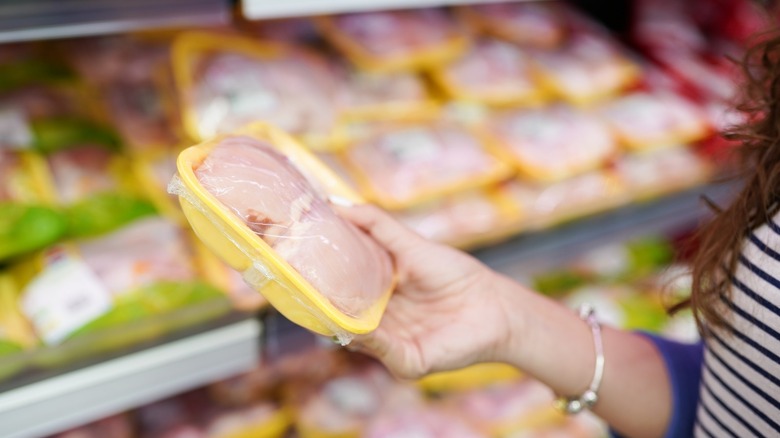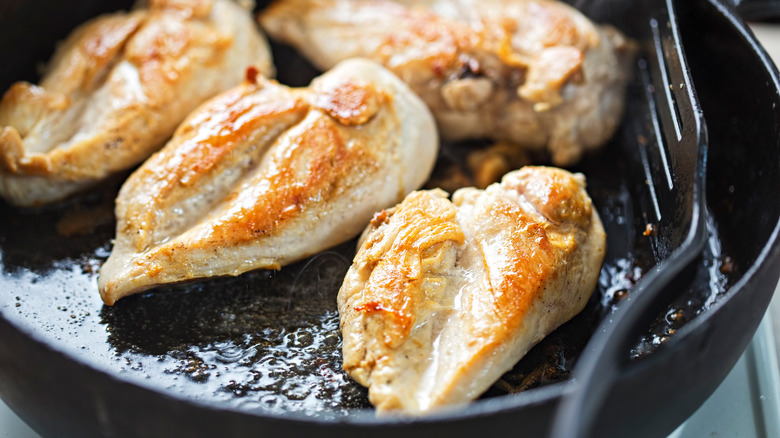Nexflix's Poisoned Sheds Light On Grocery Store Chicken Contamination
According to the CDC, each year, nearly one million Americans experience food poisoning from contaminated chicken. Netflix's 2023 documentary, "Poisoned," brings in many authorities, from those personally affected to food safety advocates to USDA and FDA officials, to examine this potentially deadly issue.
Although 15 regulatory agencies are involved in food safety, many crucial steps are likely to be overlooked. In the documentary, an anonymous USDA inspector explains that agencies such as the USDA, for instance, don't begin examining the chickens until they reach the slaughterhouse, at which point the fowl could very well be contaminated with Salmonella bacteria.
Although inspectors are standing by to examine slaughtered chickens for defects, the anonymous USDA inspector notes that more than 300,000 chickens go through the line each day. In other words, inspectors can't possibly look at every single chicken that passes by them, let alone take notice of what are essentially invisible bacteria.
Regulatory agencies shifted responsibility to consumers
Interestingly, regulatory agencies have long placed the responsibility for food safety on consumers. As recently as 2021, chicken producers were still legally permitted to sell chicken they knew to be contaminated with Salmonella, as the USDA's stance was that consumers could cook the meat to kill any bacteria. Also, Salmonella cannot be labeled an adulterant, as current laws consider it an inherent part of raw meat.
According to the documentary, IEH Laboratories tested 150 chicken samples, with 17% of the samples testing positive for Salmonella. The USDA has since started cracking down on chicken, proposing in late 2022 that Salmonella contamination be banned in certain circumstances. However, producers are still allowed to sell contaminated chicken so long as the bacteria is found in less than 15% of the total meat.
In the meantime, all we can do as consumers is remain vigilant in our handling of chicken. Avoid washing raw chicken, as splashing water can spread Salmonella to other surfaces. Use separate utensils and a separate cutting board for raw chicken to reduce cross-contamination. Cook chicken to an internal temperature of 165 degrees Fahrenheit to kill any bacteria present. Of course, always be sure to wash your hands with soap before, during, and after handling chicken products.

